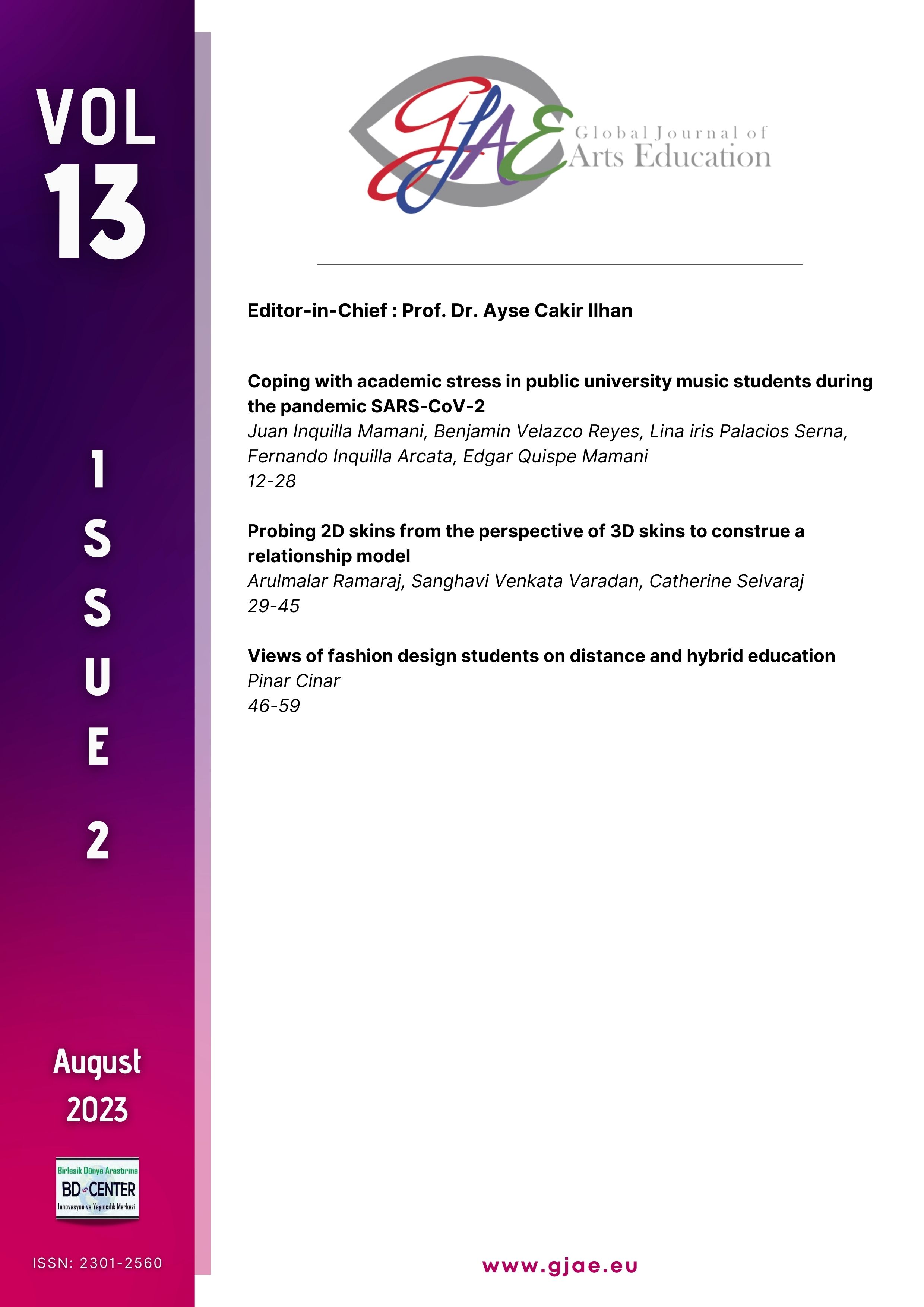Probing 2D skins from the perspective of 3D skins to construe a relationship model
Main Article Content
Abstract
Literature studies reveal that ‘cross-domain influences’ serve as potential sources of inspiration to evolve unique ideas. To examine such influences, ‘architecture and clothing,’ often recognized as the third and second skins that serve to protect humans at macro and micro scales are identified as potential domains in this study. Even though numerous papers exploring 3D and 2D are published, this study intends to construe a model based on shared views. Nearly one hundred and fifteen samples were collected from secondary sources based on a framed criterion. An exploratory methodology incorporating qualitative and quantitative data is adopted to investigate the ways through which the ideas drawn from 3D skins are espoused in 2D skins. The findings by the authors, intra-raters, and inter-raters are consolidated, synthesized, and interpreted to construe a relationship model.
Keywords: 2D skin; 3D skin; cross-domain influences; exploratory methodology; relationship model; shared views.
Downloads
Article Details
Authors who publish with this journal agree to the following terms:
- Authors retain copyright and grant the journal right of first publication with the work simultaneously licensed under a Creative Commons Attribution License that allows others to share the work with an acknowledgement of the work's authorship and initial publication in this journal.
- Authors are able to enter into separate, additional contractual arrangements for the non-exclusive distribution of the journal's published version of the work (e.g., post it to an institutional repository or publish it in a book), with an acknowledgement of its initial publication in this journal.
- Authors are permitted and encouraged to post their work online (e.g., in institutional repositories or on their website) prior to and during the submission process, as it can lead to productive exchanges, as well as earlier and greater citation of published work (See The Effect of Open Access).

